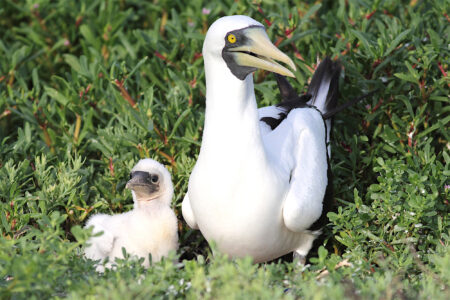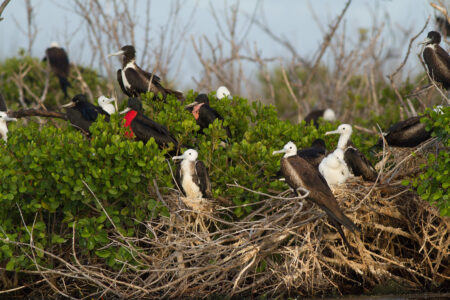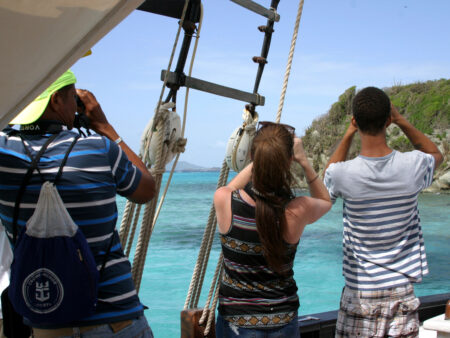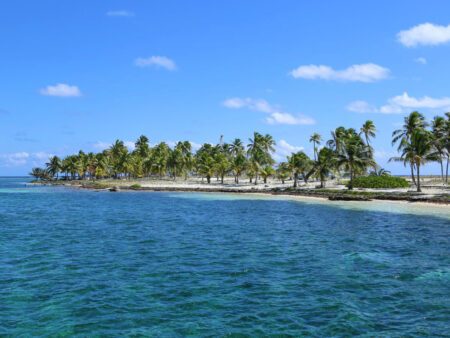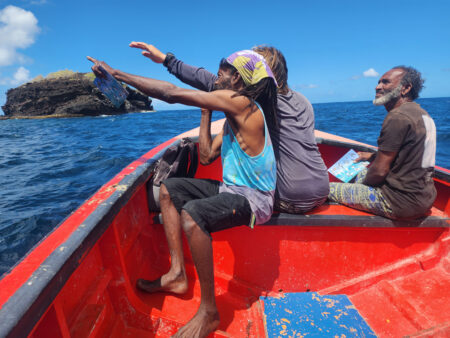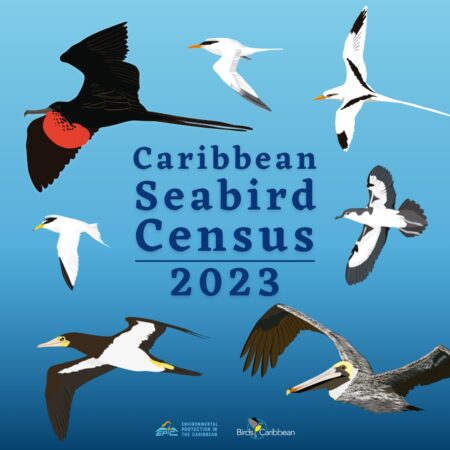 In May 2022, amidst serious declines in global seabird populations, we announced that we were targeting 2023 for the launch of the first-ever coordinated Caribbean Seabird Census (CSC23). The goal was simple—protect seabirds by first improving our knowledge of where they are nesting in the region and their current breeding population sizes. By filling critical knowledge gaps, comparing today’s numbers with previous colony counts, and in some cases, establishing baseline data—the regional census program will give us the information needed to develop the advocacy, protection, and management actions that our seabird species need. Surveys of breeding seabird populations kicked off in Summer 2022, and it has been a whirlwind of a journey! Read on to find out how the Census has progressed across the region, how you can still participate in and support this critical work, and what’s next for the CSC!
In May 2022, amidst serious declines in global seabird populations, we announced that we were targeting 2023 for the launch of the first-ever coordinated Caribbean Seabird Census (CSC23). The goal was simple—protect seabirds by first improving our knowledge of where they are nesting in the region and their current breeding population sizes. By filling critical knowledge gaps, comparing today’s numbers with previous colony counts, and in some cases, establishing baseline data—the regional census program will give us the information needed to develop the advocacy, protection, and management actions that our seabird species need. Surveys of breeding seabird populations kicked off in Summer 2022, and it has been a whirlwind of a journey! Read on to find out how the Census has progressed across the region, how you can still participate in and support this critical work, and what’s next for the CSC!
Thanks to the incredible dedication of everyone involved, we are thrilled to announce that we are now receiving a steady stream of seabird breeding data from across the region. So far, we’ve gathered data from 58 different seabird breeding sites! Even more exciting is the overwhelming support we’ve received for this initiative, with over 36 collaborators from 27 countries and territories across the wider Caribbean region. These collaborators are actively preparing their data for submission or are currently engaged in conducting winter breeding seabird surveys. This includes some of the region’s critically important colonies of Magnificent Frigatebirds and several species of boobies.
The map below highlights the countries which surveyed seabirds between 2022-2023.
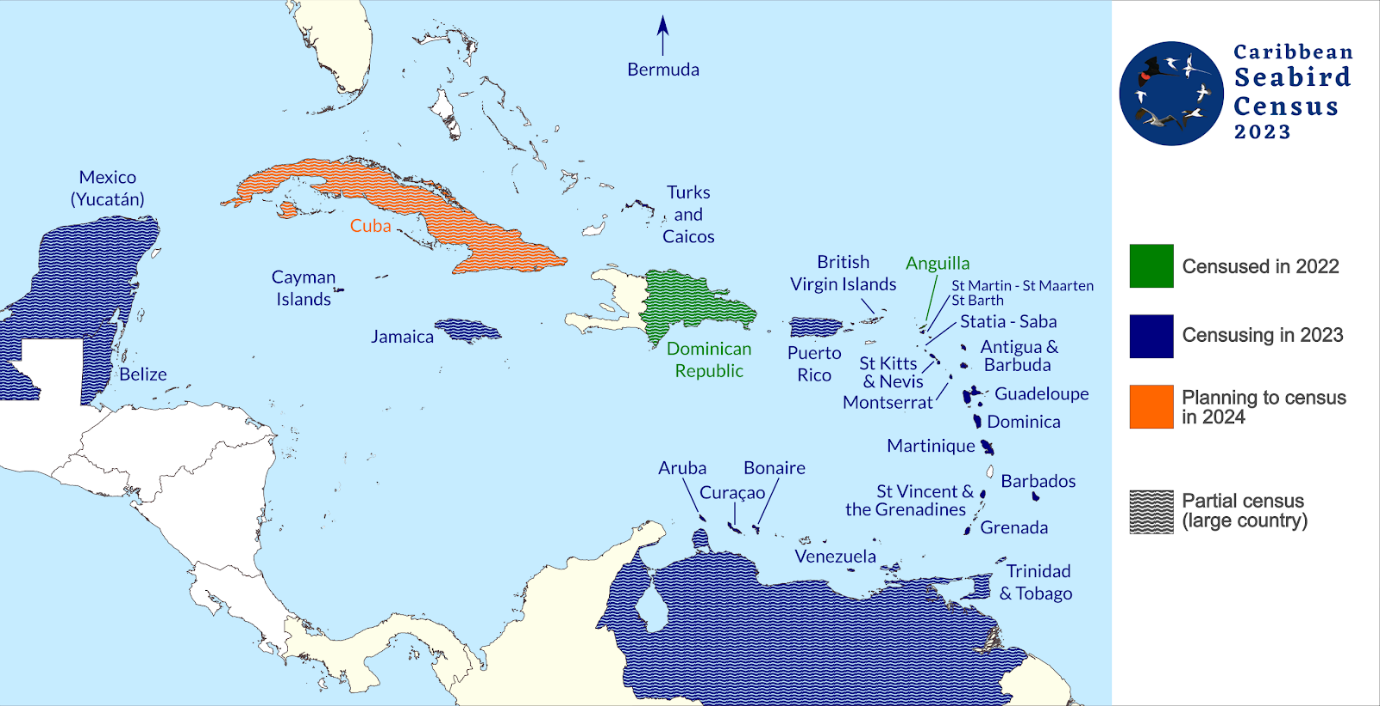
From acoustic surveys of Audubon Shearwaters in Montserrat, to the impressive 3,861 breeding pairs of Magnificent Frigatebirds on Half Moon Caye in Belize, to the bustling Dog Island, Anguilla that supports more than 300,000 breeding pairs of seabirds of 9 different species, to collaborations that will cover most of the breeding sites in Guadeloupe and Martinique—our local partners have been working hard over the last few months to collect data.
In 2024, we will keep compiling and start to analyze this wealth of data. This work will continue to be a collaborative effort with our local partners across the region. Our focus will be on comparing populations to previous surveys, with the aim of uncovering trends in seabird populations. We will also work on estimating regional population sizes and identifying potential seabird breeding hotspots. This process will be informed by global and regional population estimates and thresholds. It’s an exciting journey of discovery, and we’re eager to share our findings with you.
We have identified some gaps
We understand that not everyone has been able to participate this year, and there are still some significant gaps in our data. Logistical challenges have prevented surveys of certain key sites, including the Morant Cays and Pedro Bank in Jamaica, but we’re actively planning to address these gaps in 2024. In The Bahamas, the sheer magnitude of surveying numerous islands within this vast archipelago, which stretches over 100s of kilometers, has proven challenging given other priority conservation commitments.
Despite these obstacles, we remain optimistic. We believe that we can still fill in big parts of these significant gaps and create a more comprehensive overview of the Caribbean’s breeding seabirds. If you have the ability to complete surveys in countries where our knowledge is lacking or if you are aware of important seabird breeding sites that haven’t been recently surveyed, please reach out to us. The more we can identify these gaps and the necessary resources to address them, the better equipped we will all be to make a significant impact in safeguarding these precious seabird populations.
If you have any question or need help with designing your surveys, don’t hesitate to reach out to our CSC Coordinator, Louise Soanes: caribbeanseabirdsurveys@gmail.com
You can still participate
It is not too late to get involved! If you need more information, please visit our Seabird Census webpage where you can find more information on survey techniques, field data sheets and standardized data entry forms. You will also be able to test your knowledge of Caribbean seabirds and field methods with our quizzes, which are linked to our webinar topics (you can find links all our quizzes and past webinars here)!
If you are an avid birdwatcher but conduct less formal seabird counts, we encourage you to share your eBird checklists of breeding seabirds (or any seabird sightings) with eBird username caribbeanseabirdsurveys.
What’s next?
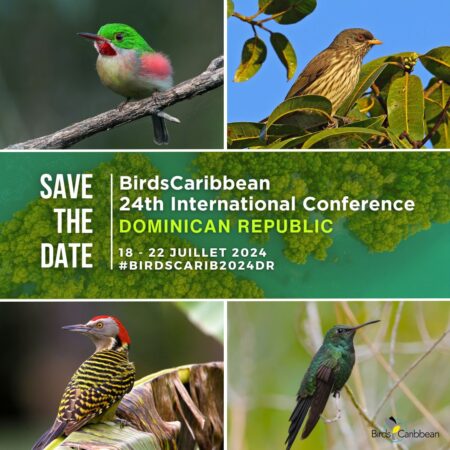 We’ve got some exciting plans in the works. We’re planning a webinar in January 2024 to summarise and discuss the valuable seabird data we’ve gathered so far!
We’ve got some exciting plans in the works. We’re planning a webinar in January 2024 to summarise and discuss the valuable seabird data we’ve gathered so far!
We will also organise a data analysis workshop at the upcoming BirdsCaribbean 24th International Conference in the Dominican Republic (DR) so that we can all get together to analyse, discuss and interpret the results as a group! Be sure to join our mailing list and follow us on social media at BirdsCaribbean for updates as the sessions are scheduled!
Whether or not you plan on contributing to the regional census or participating in the data analysis workshop, we warmly invite you to join us at the BirdsCaribbean conference in the DR from18-22nd July 2024. It’s an excellent opportunity to engage with the latest findings, enhance your skills, and be a part of our ongoing efforts to protect and conserve Caribbean birds.

